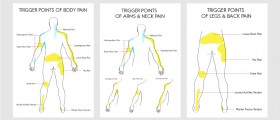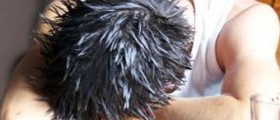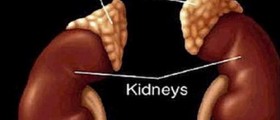
Myofascial Release Techniques - Overview
Myofascial release techniques are an excellent way to lengthen or separate layers of soft tissue. They can improve range of motion and pain is significantly reduced. They can also increase the function of the entire body. There are several tecchnique approaches; indirect (passive) way, direct myofascial release technique, direct passive release, direct active release and direct-lock-hold-passive active myofascial release.
In indirect (passive) way the process includes a very gentle stretch and low pressure. This is the most frequent myofascial release technique. In a direct myofascial release technique, which is more aggressive approach, fingertips, knuckles, forearms as well as elbows of the practitioner are used in application of pressure on the particular body areas. This approach may cause a burning sensation and the movements are either towards the head or foot.
Direct passive release includes pressure which is applied from the opposite direction of the muscle. This way the proximal attachment is strengthened during lengthening of the particular muscle. The term passive refers to patient's steadiness who actually does not perform any kind of voluntary muscle contractions. Direct active release includes active participation of a patient who moves the joint/ muscle and at the same time the therapist applies pressure in the opposite way. And finally, there is one more myofascial release technique. Direct-lock hold- passive active- myofascial release can be performed in two ways. In the first one the therapist locks or holds on to a muscle (a muscle group) and what follows is a passive taking the joint through for passive range of motion. In the second approach the therapist only performs a hold or lock while the patients actively move the treated body parts.
What are Myofascial Techniques Used for?
There are many medical conditions which can be successfully treated with myofascial release techniques. They include headache, back pain, neck pain, whiplash, pelvic pain, a variety of sports injuries, chronic pain, disc problems, migraines, pelvic floor dysfunction, neurological dysfunction, fibromyalgia, chronic fatigue syndrome, adhesions, carpal tunnel, jaw pain (TMJ), painful scars, scoliosis and sciatica.
The effects are achieved with different massage therapy techniques. During the massage the affected parts of the body (soft tissues) are stretched and released.
The goal of this particular treatment is to manipulate the fascia and this way reduce the pain in the affected muscle/muscle group. Additional benefits include healing of injuries, stress management, increase in flexibility and improvement of body posture. The desirable effects are achieved by stimulation of the specific trigger points in the muscles. The treatment can be only performed by a trained and a well experienced professional.








-vs-Trigger-Points-(Myofascial-Pain-Syndrome)_f_280x120.jpg)








Your thoughts on this
Loading...